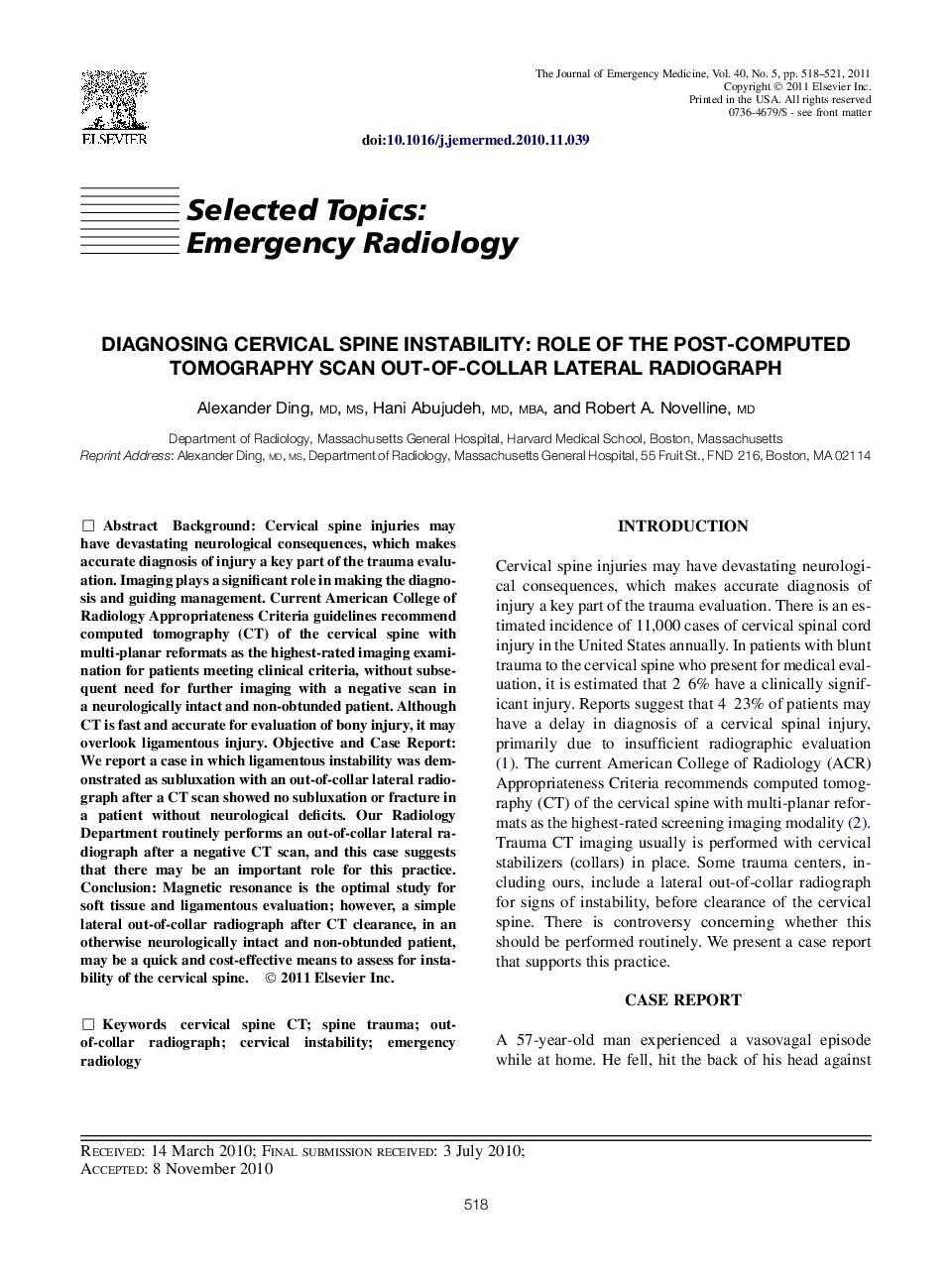| کد مقاله | کد نشریه | سال انتشار | مقاله انگلیسی | نسخه تمام متن |
|---|---|---|---|---|
| 3249216 | 1589173 | 2011 | 4 صفحه PDF | دانلود رایگان |

BackgroundCervical spine injuries may have devastating neurological consequences, which makes accurate diagnosis of injury a key part of the trauma evaluation. Imaging plays a significant role in making the diagnosis and guiding management. Current American College of Radiology Appropriateness Criteria guidelines recommend computed tomography (CT) of the cervical spine with multi-planar reformats as the highest-rated imaging examination for patients meeting clinical criteria, without subsequent need for further imaging with a negative scan in a neurologically intact and non-obtunded patient. Although CT is fast and accurate for evaluation of bony injury, it may overlook ligamentous injury.Objective and Case ReportWe report a case in which ligamentous instability was demonstrated as subluxation with an out-of-collar lateral radiograph after a CT scan showed no subluxation or fracture in a patient without neurological deficits. Our Radiology Department routinely performs an out-of-collar lateral radiograph after a negative CT scan, and this case suggests that there may be an important role for this practice.ConclusionMagnetic resonance is the optimal study for soft tissue and ligamentous evaluation; however, a simple lateral out-of-collar radiograph after CT clearance, in an otherwise neurologically intact and non-obtunded patient, may be a quick and cost-effective means to assess for instability of the cervical spine.
Journal: The Journal of Emergency Medicine - Volume 40, Issue 5, May 2011, Pages 518–521